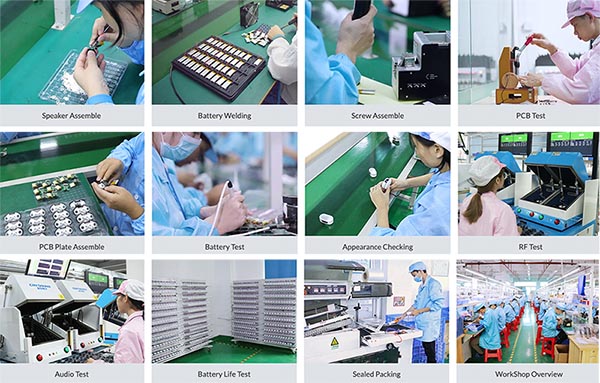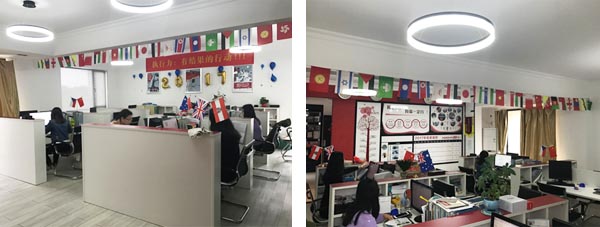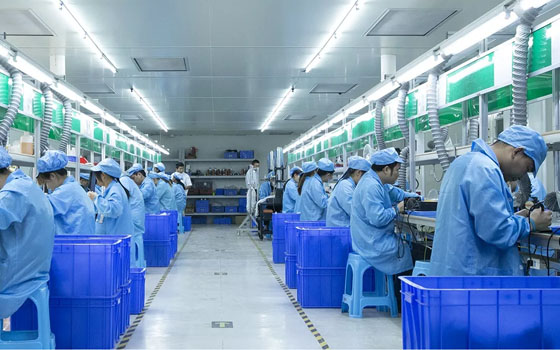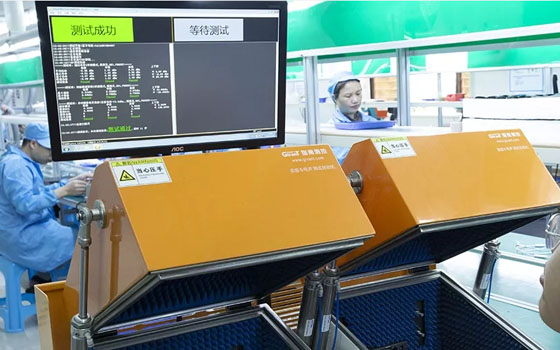Reliablity Testing at Wellypaudio
1.Frequency response testing: Use an audio generator to produce a series of frequency sounds and play them through the headphones. Measure the output sound level with a microphone and record it to generate the headphone frequency response curve.
2.Distortion testing: Use an audio generator to produce a standard audio signal and play it through the headphones. Measure the output signal and record its distortion level to determine if the headphones produce any form of distortion.
3.Noise testing: Use an audio generator to produce a silent signal and measure its output level. Then play the same silent signal and measure the output noise level to determine the headphones' noise level.
4.Dynamic range testing: Use an audio generator to produce a high dynamic range signal and play it through the headphones. Measure the maximum and minimum output signal values and record them to determine the headphones' dynamic range.
5.Earbuds characteristics testing: Test the headphones with various types of music to evaluate their performance in different styles of music. During the test, record the performance of the headphones in terms of sound quality, balance, soundstage, etc.
6.Comfort testing: Have test subjects wear the headphones and record their reactions to evaluate their comfort. Test subjects can wear the headphones for multiple time periods to determine if discomfort or fatigue occurs.
7.Durability testing: Test the headphones for durability, including bending, twisting, stretching, and other aspects. Record any wear or damage that occurs during the test to determine the headphones' durability.
8.Additional feature testing: If the headphones have noise cancellation, wireless connectivity, or other special features, test these functions. During testing, evaluate the reliability and effectiveness of these features.
9.User evaluation testing: Have a group of volunteers use the headphones and record their feedback and evaluations. They can provide feedback on the headphones' sound quality, comfort, ease of use, and other aspects to determine the headphones' actual performance and user experience.

Supply Chain Management
1.Procurement of raw materials: The production of headphones requires raw materials such as plastic, metal, electronic components, and wires. The factory needs to establish contacts with suppliers to purchase the required raw materials and ensure that the quality, quantity, and price of the raw materials meet the production needs.
2.Production planning: The factory needs to develop a production plan based on factors such as order quantity, production cycle, and raw material inventory, to ensure that production schedules and production capacity are reasonably arranged.
3.Production management: The factory needs to manage the production process, including equipment maintenance, production process management, quality control, etc., to ensure product quality and production efficiency.
4.Inventory management: The factory needs to manage inventory of finished products, semi-finished products, and raw materials, to control and optimize inventory levels, and reduce inventory costs and risks.
5.Logistics management: The factory needs to cooperate with logistics companies to be responsible for product transportation, warehousing, and distribution, to ensure that products are delivered to customers on time, with quality and quantity.
6.After-sales service: The factory needs to provide after-sales services, including troubleshooting, returns, and exchanges, to meet customer needs and increase customer satisfaction and loyalty.

Quality Control at Wellypaudio
1.Product specifications: Ensuring that the specifications, functions, and performance of the earphones meet design requirements.
2.Material inspection: Ensuring that the materials used meet quality standards, such as acoustic units, wires, plastics, etc.
3.Production process control: Ensuring that each step of the production process meets quality requirements, such as assembly, welding, testing, etc.
4.Environmental management: Ensuring that the production workshop environment meets requirements, such as temperature, humidity, dust, etc.
5.Product inspection: Sampling inspection during production to ensure that the quality of the product meets standards.
6.Function testing: Conduct various functional tests on the earphones, including connection testing, sound quality testing, and charging testing, to ensure that the product functions normally.
7.Packaging inspection: Inspect the packaging of the earphones to ensure that the packaging is intact and prevent damage or quality problems during transportation.
8.Final inspection: Comprehensive inspection and testing of the final product to ensure that the quality and performance meet standards.
9.After-sales service: Ensuring that after-sales service is timely and effective, and promptly handling customer complaints and feedback.
10.Record management: Recording and managing the quality control process for traceability and improvement purposes.

